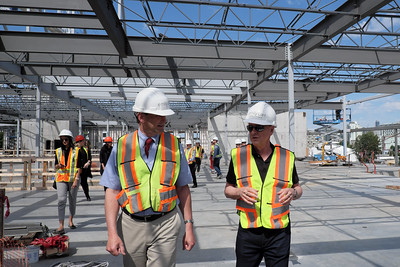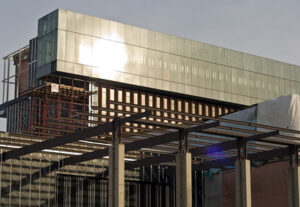Glen Oaks Community College in Centreville has begun a multi-phase renovation of its south campus buildings. The current projects represent nearly $4 million and will rehab the school’s Allied Health classrooms. Another part of the project involves converting an old theater to IT workspace, updating athletic facilities, and renovating classrooms. I’m always interested in how community colleges pay for their capital projects.
In this case, Glen Oaks has taken out a $7.7 M, 40-year loan from the US Department of Agriculture. On that repayment plan, the school will acquire about $360,000 in annual debt service over the next four decades. Community colleges have the authority to issue bonds to fund capital projects, so the USDA loan is a bit of a twist. The school just completed a $7.3M renovation of its north campus buildings.
The loan doesn’t require the school to get taxpayer approval, and it might even offer the school a lower interest rate than the current bond market does. But that doesn’t mean a 40-year loan for capital projects is a good idea.
First, the renovations aren’t likely to last 40 years. Capital refreshes usually need to take place about once every 15 years or so. Without these periodic updates, the average life expectancy of a college or university building is around 50 years. GOCC’s 40-year loan for a capital project that will last less than half of that time means the school will still be paying for these renovations well after they’ve reached the end of their useful lives.
Second, the debt service on the loan is likely to interfere with the school’s ability to get additional capital for other durable projects in the future.
Capital projects without taxpayer support push education costs higher
The big kicker is that the debt service will come from the school’s operating funds, which mean that GOCC students will be picking up the tab. Currently, in-district students pay $135 per contact hour, along with $39 per contact hour in fees. Glen Oaks has a 12-month headcount of about 1650 students and reported a full-time equivalent enrollment of 721 students in 2021. With reported credit hour delivery of around 22,000 credit hours per year, and a debt service of $360,000 per year, that’s an assessment of about $16.50 per credit hour.
Now, not all students who attend GOCC are in-district students. A handful come from Indiana, and some students will pay the slightly higher “service area” rate instead of the in-district rate, but most GOCC students are local.
There’s no way around this problem. When community colleges do not seek taxpayer assistance in the form of a bond-and-millage request, students pay the majority of the cost of capital projects. Whether the school issues general obligation bonds or takes a loan, those repayments come from someplace, and that someplace is usually the students.
This is the same failed strategy that the universities have adopted. It is precisely why universities are so expensive. Continuing to shift capital costs to community college students will soon render community colleges just as unaffordable as universities have become.
Is this really the direction we want our community colleges to go in?
Photo Credit: Province of British Columbia, via Flickr





















